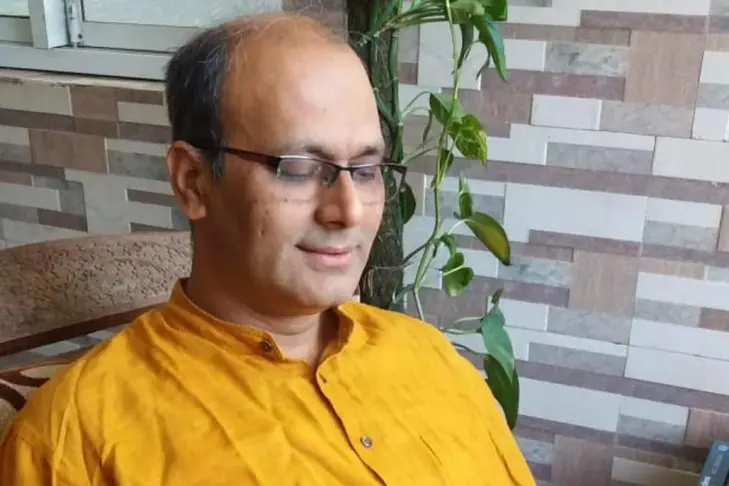Mithila, a part of the state of Bihar in India, can pride itself on being a land where marriage is a hundred per cent successful whereas marital life is failing all across with 60% cases of breakup in the west. The intelligentsia believes that such success in the belt is because of the social fabric, rich traditional values and the flawless system of the matrimonial institution.
The cultural heritage of Mithila has been a matter of curiosity for other parts of the world. There are so many cogent reasons that give Mithila an edge over other traditions. Here is the wonderful social tradition of match-making. People in the belt have adopted innovative and scientific methods in marriage for centuries. For example, Saurath Sabha (an open institution for marriage negotiations) is centuries old.
However, in today’s cities, many business centres have mushroomed in the form of the Marriage Bureaux or Matching Centres, which reportedly work to connect marriageable brides and grooms. But they are devoid of any investigative mechanism for fixing their suitability and match-ability.
Good enough, in Mithila, there have been institutions for over seven hundred years working exclusively on the personal background of the brides and grooms. The persons running these institutions were known as Panjiyar, marriage registrars. These marriage registrars have the genealogy of hundreds of years who cross-check whether the approval of conjugality may be granted.
No preparation for the marriage could start without the unequivocal assertion of Adhikar (the right to marry) to the families who would come to seek the go-ahead for the marriage proposal. And Adhikar could only be established if both sides did not have blood relations till seven generations in their respective ascendants. If the boy and girl are of the same Gotra (clan), the right of marriage gets rejected outright. Intra-clan marriage is not permissible in the belt. However, people stick to endogamy, rejecting exogamy. Today’s medical science has also stamped its authority on these practices.
After the Adhikar is established, marriage is recommended, and this is called Siddhant in Mithila. Before the wedding, the health of the groom is checked thoroughly. In this, it is called Parichhan, a word possibly derived from Sanskrit Pariksha meaning examination. In this ritual, the body of the groom is examined for a medical check-up. During the examination, the nose is pressed. The very purpose of this act is to check whether there is any semblance of epilepsy or breathing problem. Not only is this but the clothes except underpants are also taken off from the body. The main purpose of taking off clothes is to check for skin diseases. Also, psychological checks are done. In these investigations, the proposed marriage gets cancelled when the groom fails to live up to the expectations of the people on the bride’s side.
After the success of the groom in both physical fitness and mental test, the marriage ceremony is performed in the presence of the bride and groom. The people on the bride’s side are called Shariyati whereas Barati is known to be the one who represents the groom’s side. The involvement of both of these people is considered a witness.
The social fabric is so strong that there is not even an iota of doubt about the success of the marriage. If there is any strain in the new relationship, the people involved in this marriage program and the elderly of the house sit together and solve the problem. The bride and groom grow with the thought of “once married, inseparable for the whole life”. They wish to remain tied up to the matrimonial bonding even in the rebirths for seven times with their prayers to God and Goddess and rituals being performed for the same.
Even after the wedding ceremony, many rituals take place for one year, in which nature and fire are considered witnesses. Also, the lyrical rhyme tradition is amazing. The year-long period of observing rituals here also plays an important role in connecting the bride and groom. It can be called a honeymoon according to today’s Western civilization.
During this time the bride and groom get attached so emotionally that it seems that both of them are made for each other. The disintegration of the relationship becomes alien to them. It is beyond thinking. An utterance for separation is a sin here. Such is conjugal bonding.
The residents of Mithila have been very generous since the beginning. It is said that King Janak had empowered Sita to select her life partner, organizing Swamber. That means that for a marriageable girl, the right to choose the groom was in Mithila even in the epoch of the Ramayana. For centuries, Mithila has been an example of women’s empowerment. There has never been any gender bias either.
Contributed by: Dr Birbal Jha. Dr Jha, known as Paagman of India, is the Managing Director of British Lingua and Chairman of Mithilalok Foundation.
Views express are personnel.
Keep watching our YouTube Channel ‘DNP INDIA’. Also, please subscribe and follow us on FACEBOOK, INSTAGRAM, and TWITTER.


